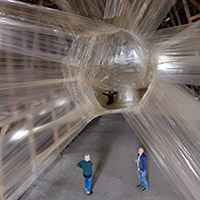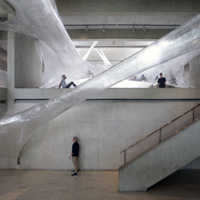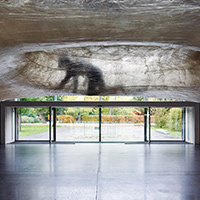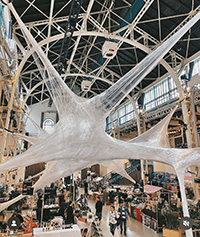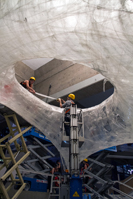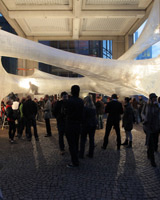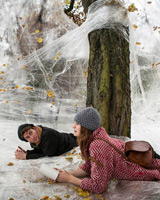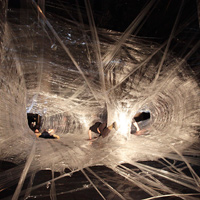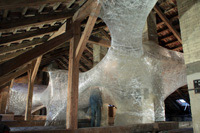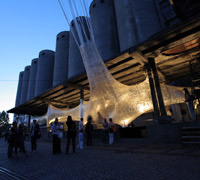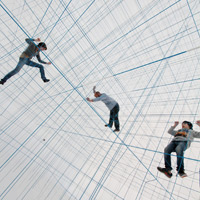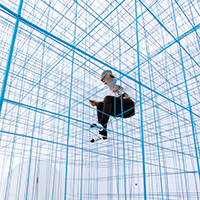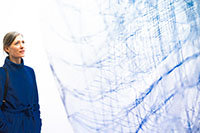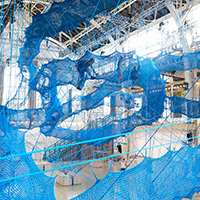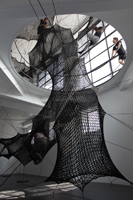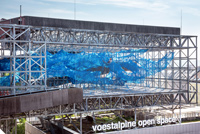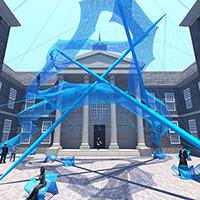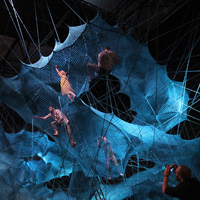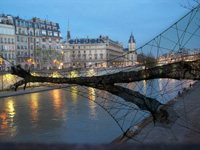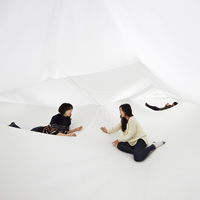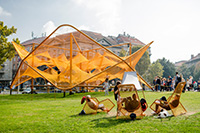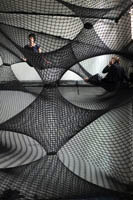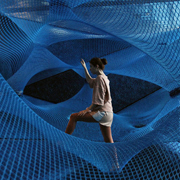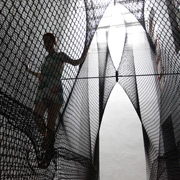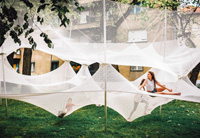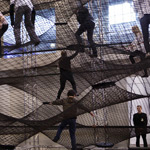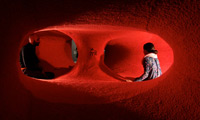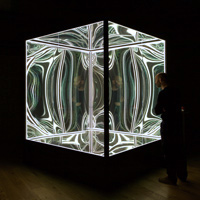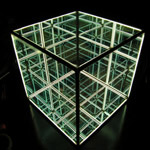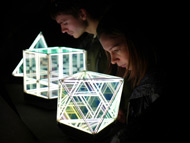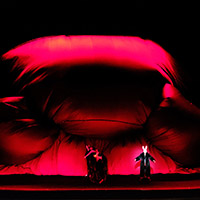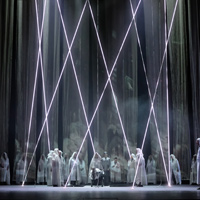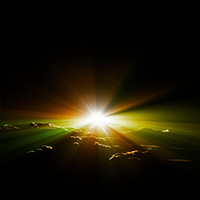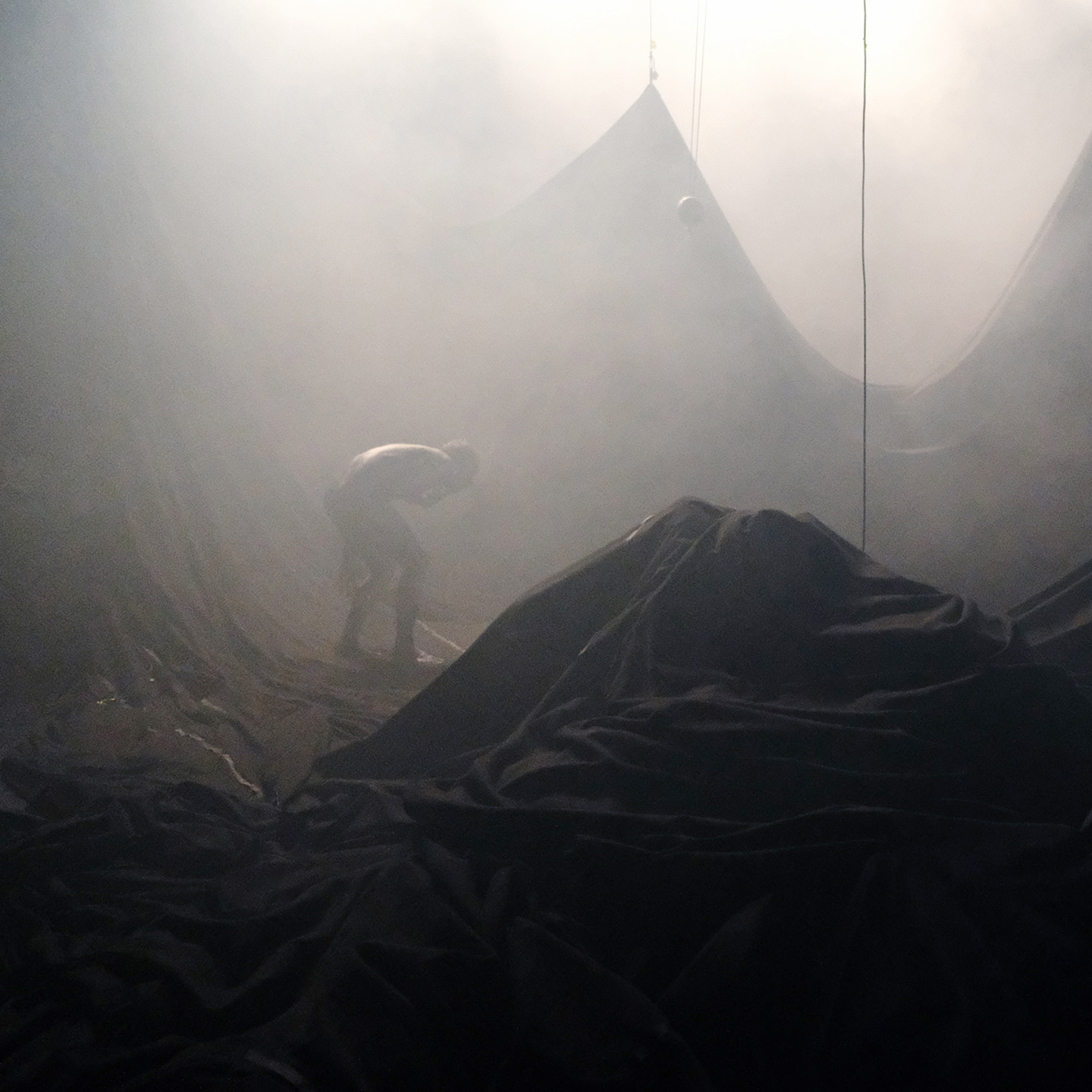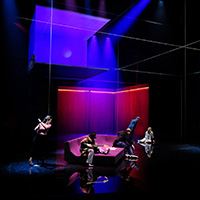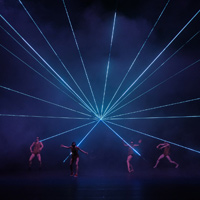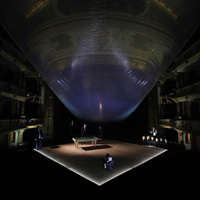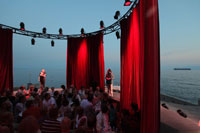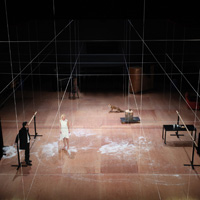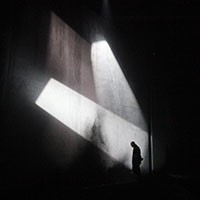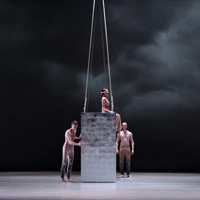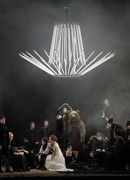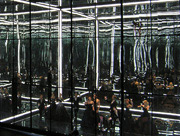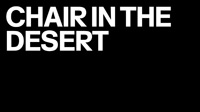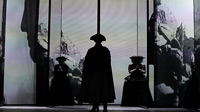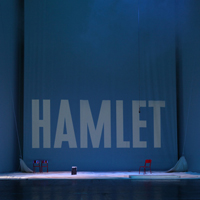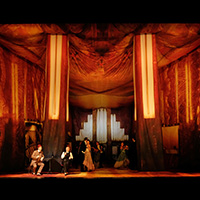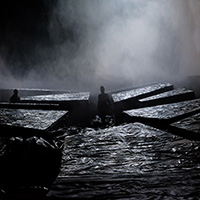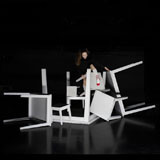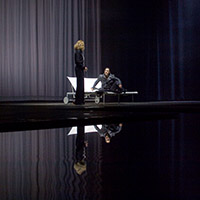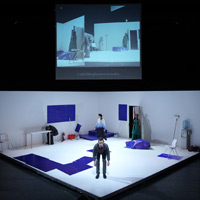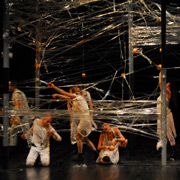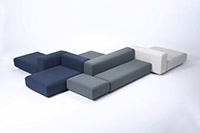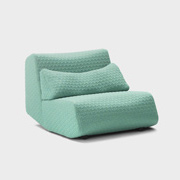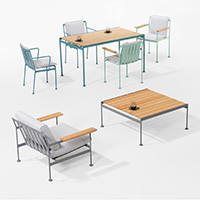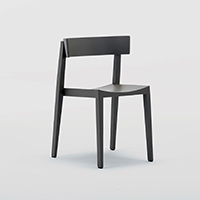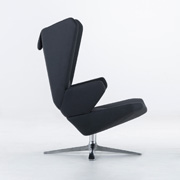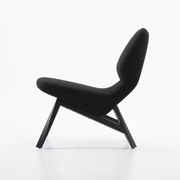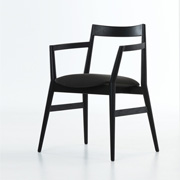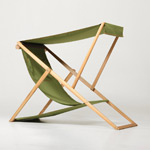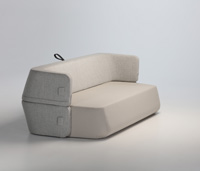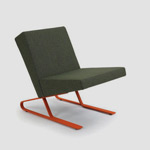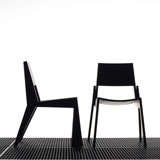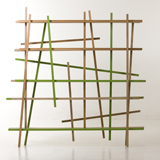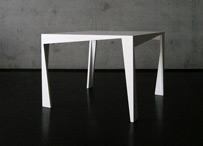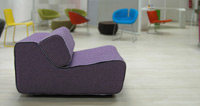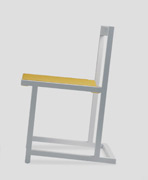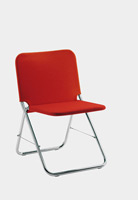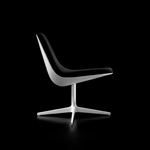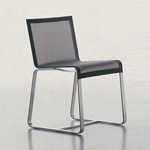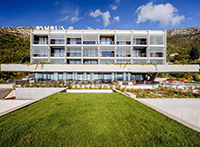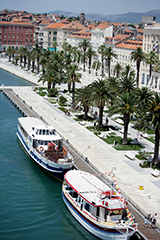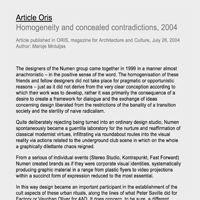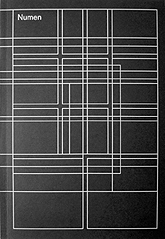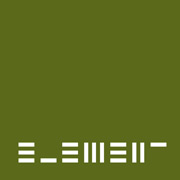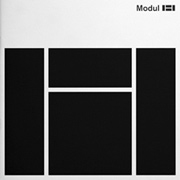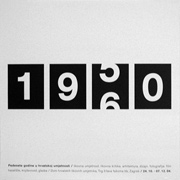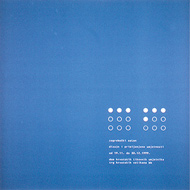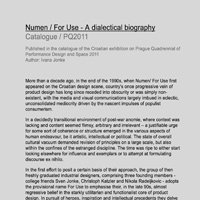The Project won the competition and will be permanently installed in the courtyard of the Stedelijk Museum Schiedam after its complete renovation with the opening date 01.10.2021.
Competition entry text:
Our proposal for the square installation is an attempt to smoothly integrate our love for the interactive, suspended and parasitic large-scale interventions with the very multifaceted and historically sensitive urban context of the commission.
We have also taken into account the open and unconventional nature of the Stedelijk Museum as the key local cultural institution - as well as its grandiose, possibly estranging, heritage architecture - and tried to find a spatial and formal modality that would connect and emphasise both. The main idea is to create a striking visual beacon in the form of a dynamic alien body, composed of blue-coloured safety nets similar to our TUBE installations, that would float above the existing architectural layer, suspended on the carefully placed tensegrity bearing structure. The nets are stitched to form a walkable/crawlable meshed artery that spirals and coils above the square and around the constructive spears like some leviathanic beast. Its tentacles reach both towards the window openings of the Museum chapel and the upper window of the Monopole Cinema across the Hoogstraat, as well as down to the square surface itself, extending into a specially designed public armchair.
The blue, centipedesque body is suspended with numerous non-elastic strings which enable an even distribution of forces and allow the structure to feel supple and sheer as it transcends the void above the square and Hoogstraat, creating the sensation of hovering above the cityscape for the person inside. The human explorer experiences architectural environment from new, surreal angles as (s)he moves towards the sky through the length of the installation, suddenly observing the upper details of the tetrastyle portico, the Corinthian columns, the pigeons and pediment over the main entrance from above or even in reverse. This gives the unsuspecting guest a chance to have an entirely novel and exciting visual/kinaestetic experience of the Museum and its adjoining public spaces, and to become an actual part(icipant) of its ongoing spatial and cultural dialogue with the urban context.
Despite the gargantuan size, the main body of the installation does not erase the Museum front from the city vistas, as its transparent, 3D wireframe aesthetics, always edged somewhere between the digital and the analogue, seems more like an eye-catching visual noise or a quivering cloud of colour than actual hard matter.
The three slanted 18m-high “mikado-stick” metal rods interconnected with tensile cables, that comprise the main constructive element of the installation, are an equally important part of the visual ensemble. Besides sparing the protected Museum building from supporting the installation body, they bring in - with their bold angles and large spans - the connotations of the industrial heritage of Schiedam, of sea-swept ship masts and windmill blades and the skeletal bridge of the Lange Haven waterway.
Tensegrity structures are by themselves extraordinary, due to their effortless size and formal elegance - with the very gentle, minimal constructive lines based on forces and not mass. There is a certain restraint and innate rationalism about them - a postmodernist, classicist feel that in our case blends well with the present neo-classical stratum by Giovanni Giudici. The rods stand in interesting opposition with the wild and organic excessiveness of the blue serpent and tower above the city without being visually heavy.
Another important aspect of the work is the idea that the levitating body of the installation, besides coiling in the void above, somehow connects with the Museum square and bleeds into the life of its surface. This we intend to achieve by extending one of its limbs down to the floor and fixing it onto the ground (along the perimeter of the square, to avoid spatial obstruction of the entrance and central public areas).
The open jaws of the fixed extension smoothly transform into the metal construction of the armchair, while the stretched nets form the seat and the backrest. Apart from the embedded seat, we would also have an undefined number of free-roaming, sentinel armchairs, scattered around the square like an unruly spawn of their serpent-mother, either messy or arranged, whatever suits the occasion.
Thus the physical characteristics of the installation become an aspect of the Museum’s public seating design. The armchairs could be used publicly anywhere within Schiedam but will always remain the urban emissary of the Museum.
In theory the installation could be accessible from the square through the open-jaw limb but in all likelihood that entry point will be blocked (with netting) in order to control the entrance from inside the museum and only open for special events.
The blue colour of the safety nets and tensile cables and rods is chosen on the merit of its conspicuousness and unconventionality in the context of the historic urban matrix but also because of its capability to blend and layer well with the standard colour palette of the sky (ranging from greyscale into shades of blue) which softens the edge of its visual intrusion.
To conclude, we consider the participation of audiences crucial for this type of public project and see biggest value in the interactive aspect of our proposal and in the transformative experience that crawling, bouncing, lounging above and observing the city and the Museum through the eyes of a bird, could bring to its future visitors.
That way, not only our installation, but also the “floating” visitors themselves, become the landmark and symbol of the Stedelijk Museum Schiedam.
Custom designed chair - Prototype
Model 1:25

